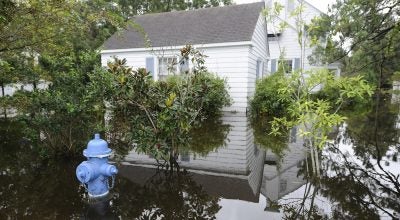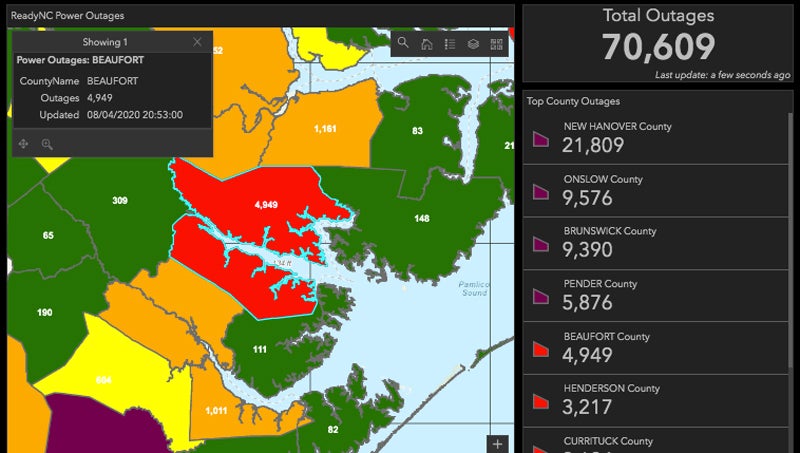Debris in the aftermath of hurricane flooding
Published 10:42 am Friday, September 21, 2018

- COUNTY CLEANUP: Beaufort County Emergency Services offers this graphic to help people understand how to separate their debris for pickup in the unincorporated areas of the county. (Beaufort County Emergency Services)
It comes along every now and then — a storm that sends a surge from ocean to sound, from sound to rivers, from rivers to creek and into the roads and fields of Beaufort County.
A flood is bad enough. The cleanup after is even worse.
So what to do after flooding of homes, businesses, garages, sheds? How does one get rid of the mounds of molding debris left behind?
It’s a given that any materials touched by floodwaters need to be washed thoroughly. This is because floodwater is not clean. It can contain chemicals and a lot of bacteria from a variety of sources, including wastewater pumps inundated and unable to operate, runoff from livestock, dead animals, overwhelmed septic systems. Some items are salvageable; others are not.
For example, upholstered furniture caught in a flood may dry out, but it likely started growing mold before the water even receded.
Some experts suggest cleaning items with bleach; others say a mixture of white distilled vinegar and baking soda will do even better. Airing out with the help of air conditioning or high-power fans will help decrease mold proliferation.
DEBRIS
It’s important that materials and household goods destroyed by flooding be removed from inside as soon as possible to cut down on mold growth inside.
Beaufort County arranges pickup of storm debris in the unincorporated parts of the county; each municipality arranges for pickup within their town limits, according to Chris Newkirk, chief of fire/emergency management for Beaufort County.
The county has activated its storm-debris removal contract with Southern Disaster Recovery– Vegetative debris, C&D (Construction & Demolition), appliance and white goods debris, electronics, and household hazardous waste will be removed from state-maintained rights of way, but it may take a few weeks, Newkirk said.
“I just want for the public to know, this will not likely be an immediate pick-up. It will likely be the first of October before you see trucks actively picking up debris from the roadsides,” Newkirk said.
Newkirk said people are welcome to take what would normally be accepted at local waste sites to those sites, but those sites are not prepared storm debris.
“Particularly building materials — wood, sheetrock, insulation, things like that — we’re not set up to accept those at the volume this storm is likely to produce, so we’re asking people to set those things up on the roadways,” Newkirk said.

CONSTRUCTION DEBRIS: Place items such as building materials, carpet, drywall, furniture, lumber, mattresses and plumbing parts together in a construction and demolition debris pile.
According to a Beaufort County Emergency Services press release, residents should ensure that all debris is stacked within the right of way but well off the road to not to impede traffic or create unsafe driving conditions. Storm debris must be divided into separate piles, with each pile clear of electrical lines, water meters, hydrants and mailboxes. Vegetative debris should not be placed plastic bags or containers. Businesses are required to make their own arrangements for debris clean-up.
The City of Washington issued this information about its debris pick-up:
- Yard waste (limbs, leaves, etc.) should be placed along the curb to be picked up on your regular pickup day. Leaves will not be required to be placed in bags or bins until Oct 1. Please cut limbs and trees into manageable sizes of 3-4 foot lengths.
- Bulky items from homes and business that were flooded will be picked up starting Tuesday. Items that will not be picked up include tires, hazardous materials, appliances that contain or did contain Freon, televisions, computers and computer accessories.
- Please keep yard waste and bulky items separate.
- Those missing their green or blue rollout cart, can contact the Public Works office before their regular trash pick-up day at 252-975-9302.
According to the Beaufort Business Bureau serving Eastern North Carolina, those dealing with debris should be cautious:
- Debris is hazardous. It often has sharp or rough edges; it may cause falls; it may contain hazardous material such as asbestos, lead or fiberglass; and it may have been contaminated with chemicals or germs by the flood or storm.
- When cleaning up debris, one of the first steps is to assess the types of waste you are dealing with, and what the disposal procedures should be.

STORM DAMAGE: Furniture sits curbside outside a flooded home in Washington Park this week. Washington Park’s waste disposal crew began picking up and disposing of storm debris this week. (Vail Stewart Rumley/Daily News)





